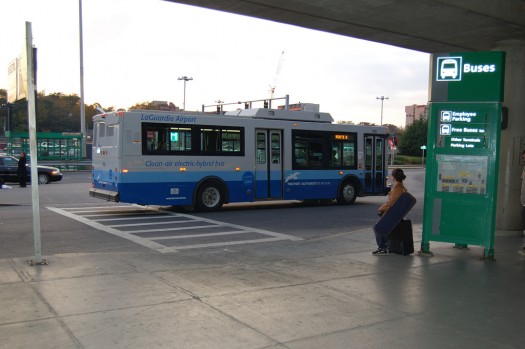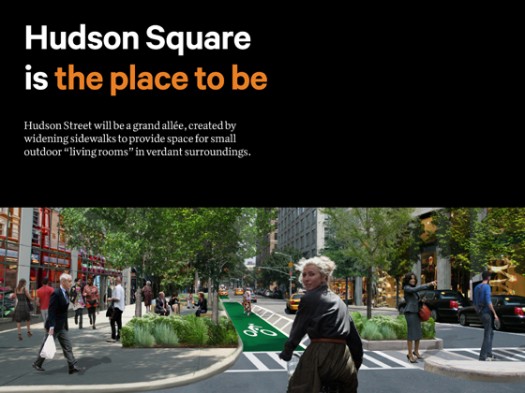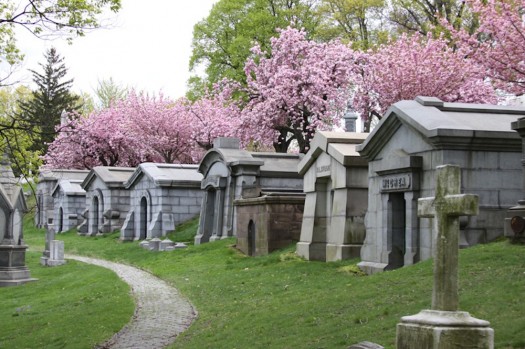
We are celebrating 15 years — and counting — of stories that are deeply researched and deeply felt, that build a historical record of what the city has been.
We are celebrating 15 years — and counting — of stories that are deeply researched and deeply felt, that build a historical record of what the city has been.
HUDSON YARDS PREVIEW
The Hudson Yards redevelopment, with its $6 billion price tag and 12 million square feet of new space, is just as much a megaproject as Atlantic Yards or the new World Trade Center, but it has generated less controversy and, therefore, fewer headlines. With its first phase slated for completion in 2017, New York architecture critic Justin Davidson takes an exclusive in-depth look at what we can expect. His reporting details a high-profile September meeting between the site’s developers and the architects of the myriad skyscrapers, many of whom were meeting for the first time. Davidson describes vividly a candid conversation among the principals of world-renowned firms: Elizabeth Diller of Diller Scofidio + Renfro, William Pedersen of Kohn Pedersen Fox, David Childs of Skidmore Owings and Merrill, plus David Rockwell, Howard Elkus, and Thomas Woltz. Amusingly, during the meeting “one architect points to a lozenge-shaped skyscraper and casually, with a twist of his wrist, remarks that he’s thinking of swiveling it 90 degrees.”
Davidson’s piece walks the reader through the designed portion of the project on the east side of the site (as of yet, the western portion wrapped by the High Line’s final section isn’t finalized.) Curbed NY breaks down the development’s basic components. The largest buildings, two sloping office towers designed by KPF, will top the height of the Empire State Building. Coach’s new headquarters, also by KPF, interacts with both the street and the adjacent High Line. DS+R and David Rockwell have designed a residential tower holding 680 units. Also by DS+R is a large “culture shed,” whose function and design is still under discussion, but hopefully would host traveling exhibitions and gallery shows. SOM’s tower includes “a large Equinox gym, offices, an orthopedic hospital, a sports emporium, a hotel, and condos.” Landscape architect Thomas Woltz is designing the massive five-acre publicly owned private space which connects the buildings. The projects — six in all — would each draw tremendous attention on their own, given their size, location, and designers. Combined, they are set to dramatically transform the built environment of Manhattan.

Bus Arrival At LaGuardia | November 2008 | Photo by Flickr user Herve Boinay
EASIER LAGUARDIA ACCESS ANNOUNCED
Getting to and from LaGuardia Airport in Queens is nothing short of a nightmare for tourists and residents alike. Over 21 million people passed through LGA’s terminals last year, and over 85% of passengers opted for car or taxi instead of public transportation. Meanwhile, residents in the immediate vicinity of the airport lack sufficient bus routes, and the M60 bus route, which travels between Harlem and LaGuardia, slows to a 2.7 mph crawl while on 125th Street. The airport’s 8,000-person staff commutes daily from the far reaches of every borough, often transferring several times along the way. On October 11th, Mayor Bloomberg, NYC DOT Commissioner Janette Sadik-Kahn, and MTA Chairman/CEO Joseph Lhota announced improved bus service for three routes to LGA. The faster “Select Bus Service” routes would expedite the travel time for huge portions of the city, with proposed routes along 125th, the Bronx’s Webster Avenue, and Queens’ Jackson Avenue. Improved airport transportation was laid out in Bloomberg’s PlaNYC, and once implemented, could shave 10 to 40 minutes of travel time to and from the airport.

Streetscape Improvement Plan for Hudson Square | Image via Hudson Square BID
HUDSON SQUARE MASTER PLAN
Hudson Square Connection, the business improvement district (BID) for Hudson Square, has unveiled a new master plan for the neighborhood. Extending from Hudson River Park to Sixth Avenue, between West Houston Street and Canal Street, the area, according to the Times’ Matt Flegenheimer, is “known to most other residents as the smattering of blocks — south of the West Village, west of SoHo — one must traverse to reach the [Holland] tunnel.” The master plan would cost an estimated $27 million, “roughly half” of which would be covered by the BID. Plans call specifically for the reinvention of Spring Street as the area’s Main Street, with improvements to lighting, additional street trees, and the placement of “green fencing” along parking lots. Along Sixth Avenue, a triangular plaza will be renovated into “an emblematic new gateway into Hudson Square.” New lighting, seating, and planting will hope to draw people into the area and “Little” Sixth Avenue, a small road adjacent to “big” Sixth Avenue created by the street grid shifting orientation between Hudson Square and SoHo, would visually connect to the public space through “playful” painted roadway graphics. The traffic-choked Varick Street would get a new green traffic median, in-ground lighting, and vine structures, while Hudson Street would be lined with a double row of trees, bike lanes, and pocket parks. Throughout the neighborhood, trees, raised beds, and curbside seating would improve the sidewalks. Stephen Miller from Streetsblog points out that “changes to Freeman Plaza, at the entrance to the Holland Tunnel, have garnered the most press attention but are not included in the master plan.” The proposals design team included Mathews Nielsen Landscape Architects, Rogers Marvel Architects, Billings Jackson Design, Arup, and Open.
WASTE-TO-ENERGY
Last year we looked at where our trash goes after we take it to the curb, an exploration that touched on the history of toxic incineration, waste transfer stations, and the transportation of our garbage to out-of-state landfills. Most methods of dealing with waste, both past and present, have enormous environmental, economic, and political costs, especially in poorer neighborhoods where a lot of our waste infrastructure has traditionally been located. Therefore, balancing ecological imperatives with the legacy of environmental injustice can be tricky. Case-in-point: waste-to-energy (WTE). As New York City attempts to shift away from dumping garbage in out-of-state landfills and towards local energy production — saving an estimated $119 million dollars per year and reducing greenhouse gas emissions by 240,000 metric tons per year over 30 years — it has to contend with fears that the technology for converting waste into energy is “unsafe, unproven and inequitable to communities of color.” Proponents of the technology in question claim that concerns about air pollution are unfounded and that likening “thermal processing” to incineration is inaccurate. Even if the critics of the plan are successful in forcing greater scrutiny on WTE processes, the environmental implications (and tax burden) of shipping millions of tons of garbage out of state mean a viable alternative is urgently needed.
EVENTS and TO DOs

Greenwood Cemetery April 2010 | Photo by Flickr user lostinbrooklyn
OBSCURA SOCIETY CEMETERY TOURS
Obscura Society, the real world exploration arm of Atlas Obscura, is hosting its second annual Cemetery Exploration Series with “resident cemetery expert” Allison Meier. Over the next month, Meier will guide weekend tours through New York’s storied graveyards. Including Brooklyn’s Greenwood, the Bronx’s Woodlawn, Manhattan’s Marble, and Queens’ Bayside, the tours will get access to sites and catacombs rarely open to the public. A portion of the tour sales will go to support the cemeteries funding and maintenance. What better way to celebrate Halloween than donating to the city’s “historic places of final repos?” The events take place on October 14th, 20th, 28th, and November 11th. Tickets range from $12-18 dollars. Visit the series’ website for more information and to purchase tickets.
WIRED FOR CHANGE CONFERENCE
The Ford Foundation is hosting a conference to discuss a question facing many policymakers, companies, and academics the world over: what do we do with big data? Wired for Change: the Power and Pitfalls of Big Data will focus on the exponentially growing capabilities of data-capturing technology. Leading visionaries are gathering to discuss the usefulness of the near-unscalable data. The one day conference features a series of panels packed with leaders of internationally-renowned organization including: The Associated Press, University of Pennsylvania, MIT Center for Civic Media, MIT Media Lab, Human Rights Watch, Guardian News, The City of Chicago, Federal Trade Commission, Mozilla, the inventor of the World Wide Web, and many more. The event takes place on October, 23rd 2012, from 9am to 5:30pm at the Ford Foundation, 320 East 43rd Street New York, NY 10017. The event is free and open to the public. Registration is required.
The Roundup keeps you up to date with topics we’ve featured and other things we think are worth knowing about.
The views expressed here are those of the authors only and do not reflect the position of The Architectural League of New York.